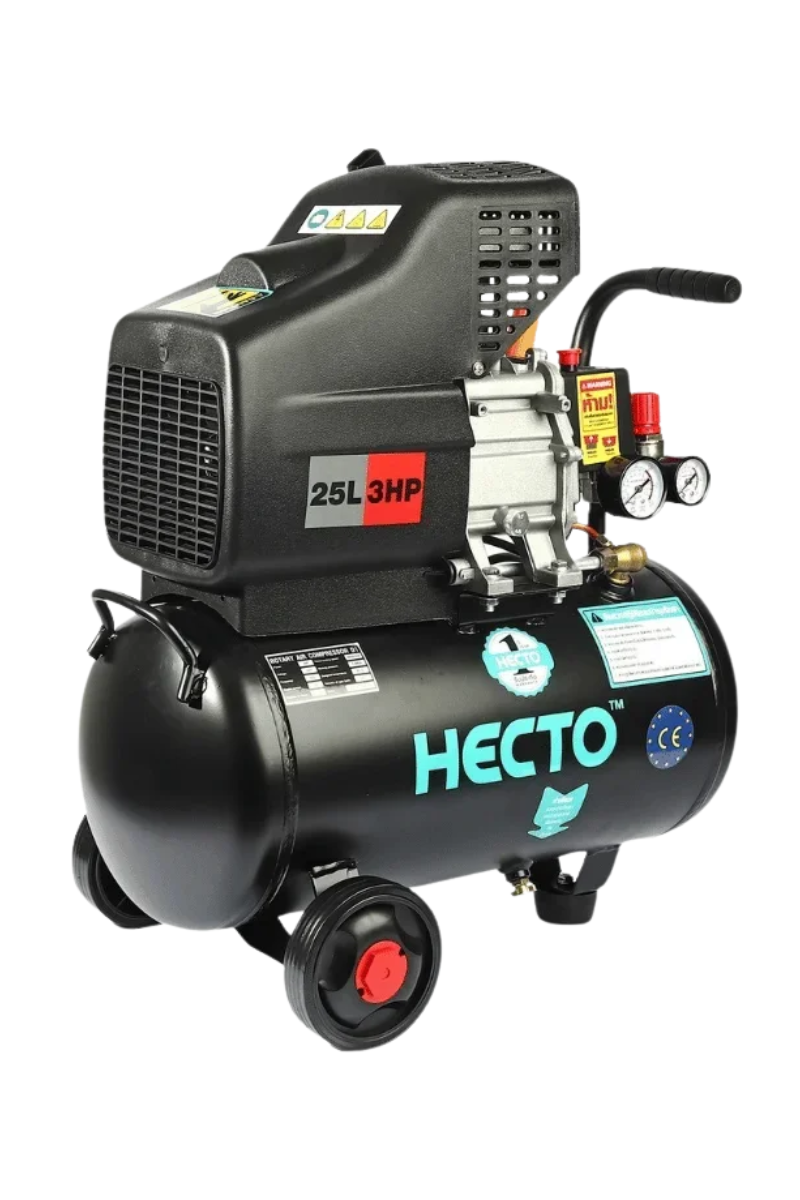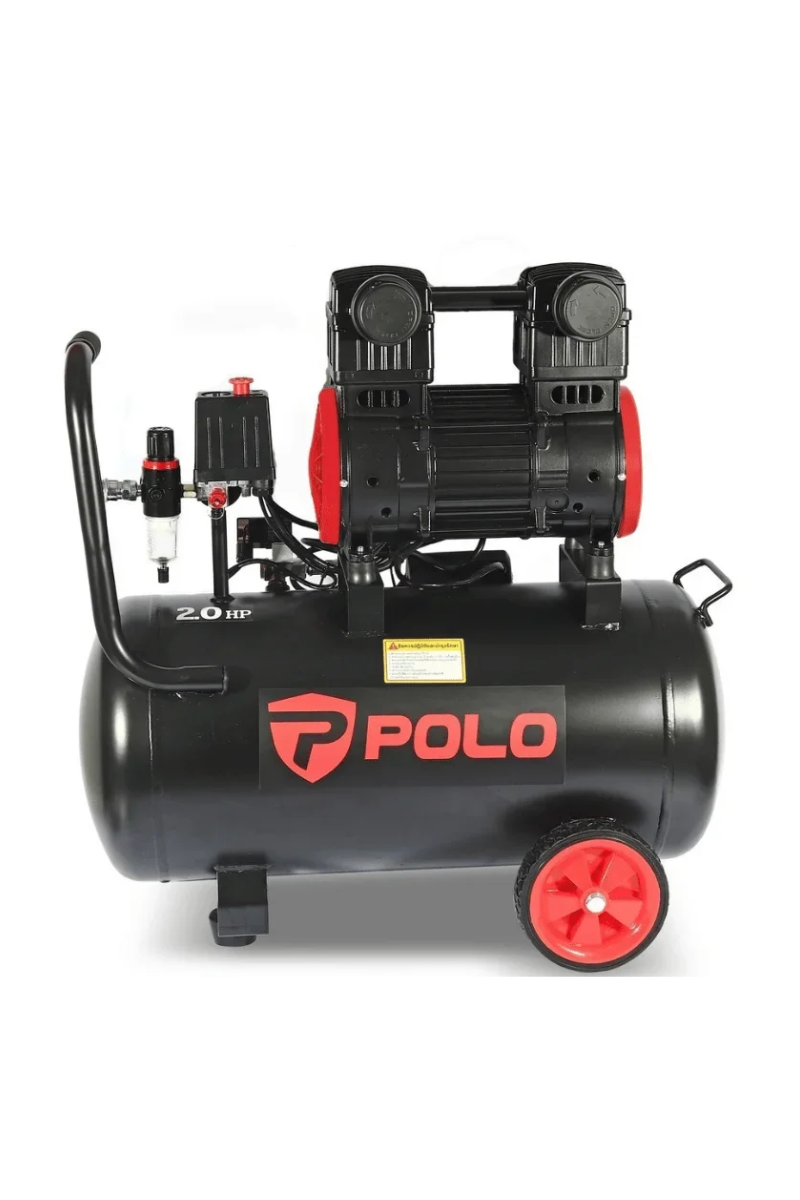Air Compressors: Essential Tools to Understand Before Buying
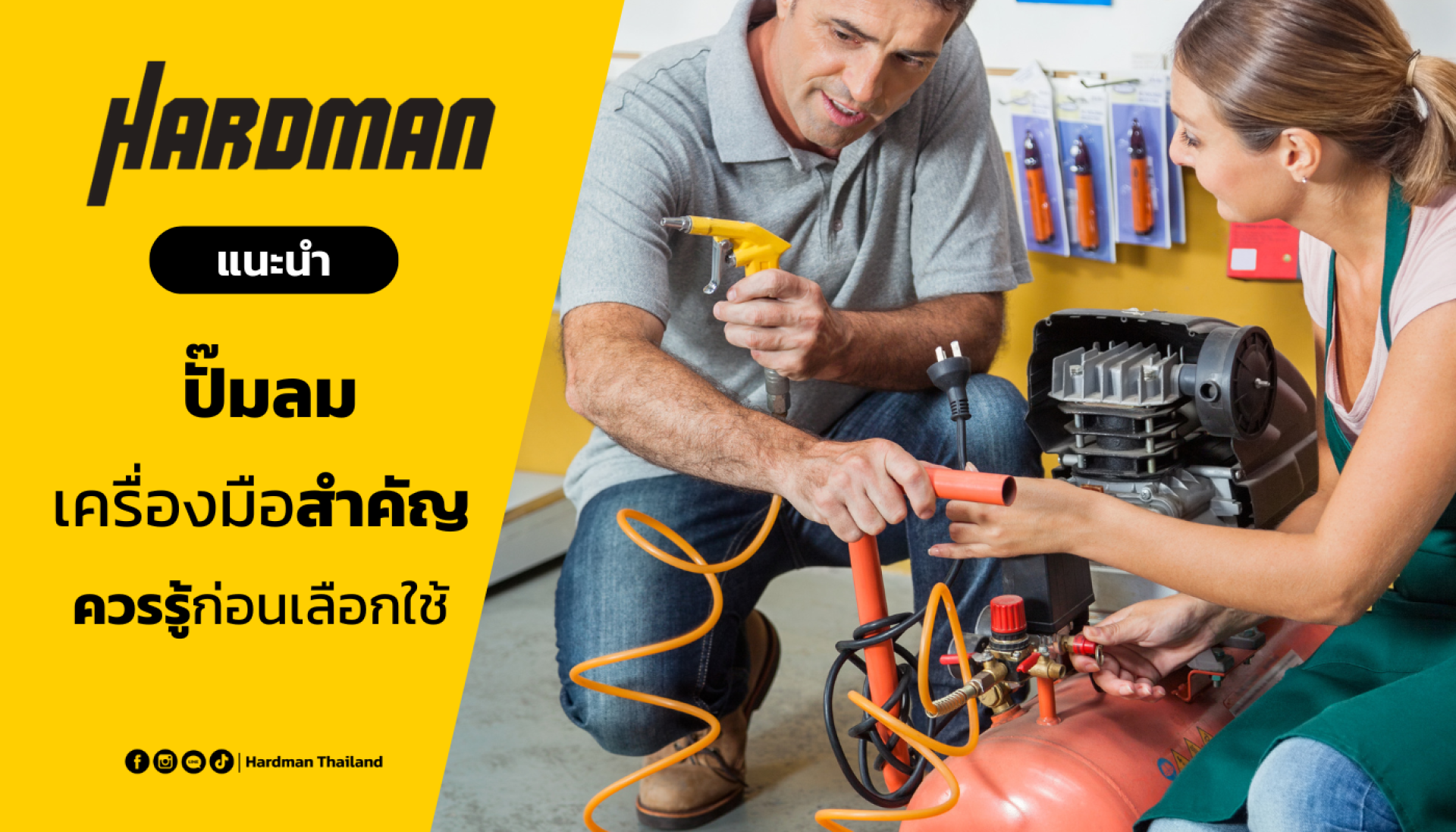
Air compressors, often referred to as "air pumps," might seem simple, yet they play a crucial role in everything from household DIY projects to large-scale industrial applications. Whether it's for inflating tires, spray painting, powering pneumatic tools, or even driving production lines, an air compressor acts as the heart of compressed air, enabling tasks to proceed quickly and efficiently. However, choosing the right air compressor isn't just about price or a famous brand. In reality, air compressors come in many types, sizes, and systems, each perfectly suited for entirely different tasks.
What is an Air Compressor
An air compressor is a machine used to compress air to a higher-than-normal pressure. This compressed air is then utilized to power equipment or tools that require pneumatic energy, such as air guns, pneumatic tools, spray painting systems, or even for inflating car tires. An air compressor typically features an air tank that stores compressed air, allowing for continuous use.
The operation of an air compressor generally begins by drawing air from the outside into a compression chamber. A piston or rotor then compresses the air to a high pressure before storing it in the air tank, ready for use. The power of an air compressor is measured by the maximum pressure it can compress, with air pressure commonly measured in PSI (Pounds per Square Inch) or Bar.
Types of Air Compressors and How to Choose the Right One
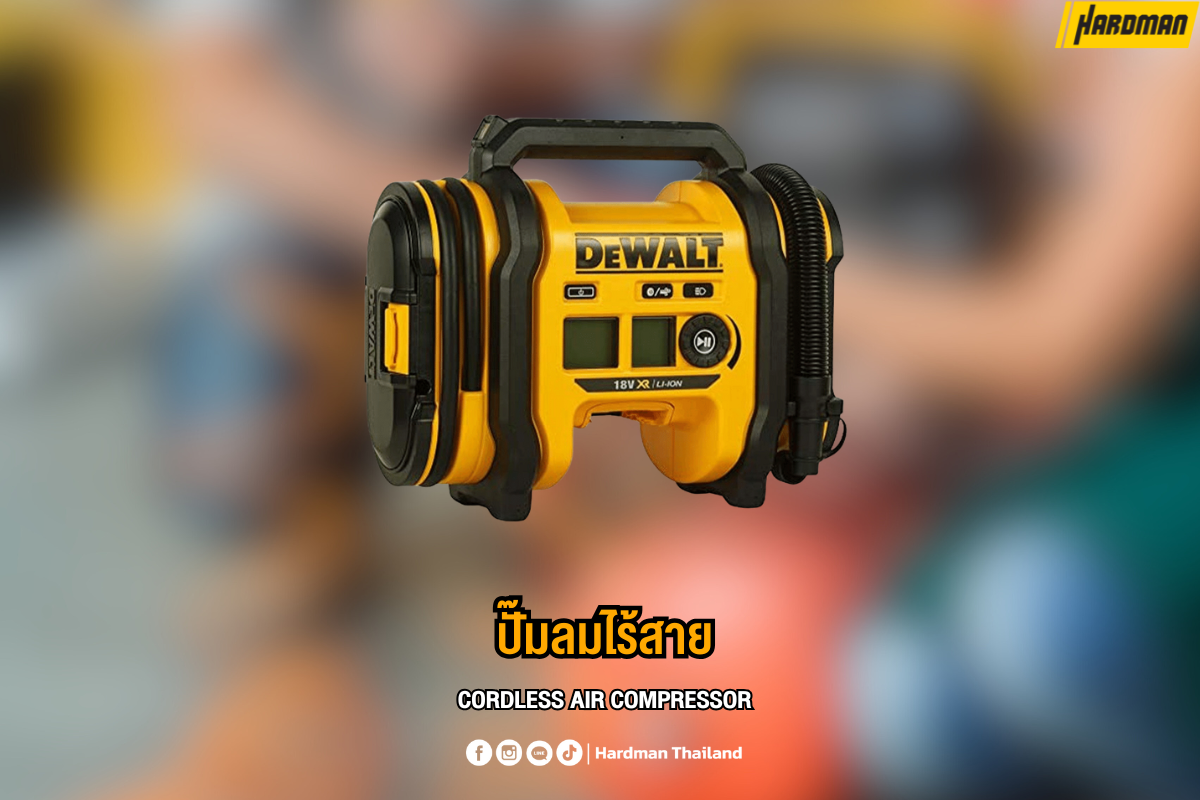
Cordless Air Compressor
Cordless air compressors offer excellent mobility and portability since they don't require a power cord. They're ideal for small inflation tasks or in areas without electricity, such as inflating bicycle tires, sports balls, or for emergency use. However, their pressure and operating time are limited by battery life.
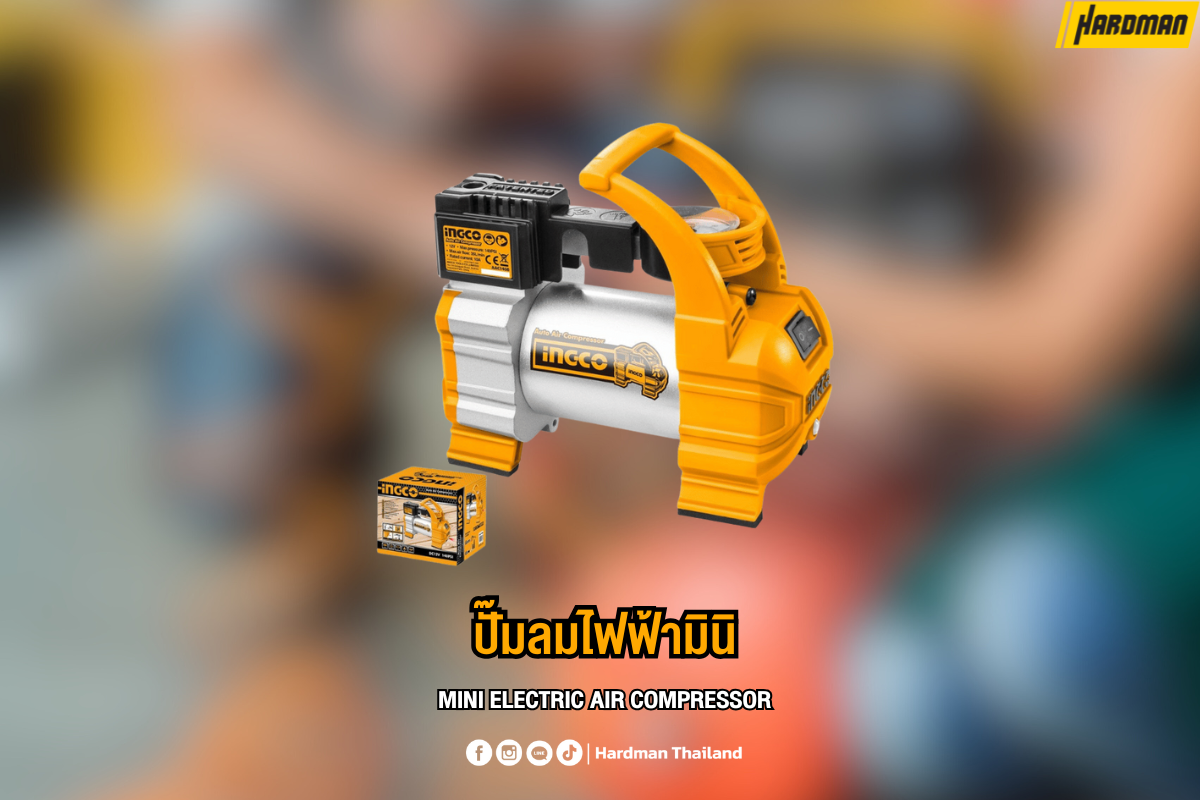
Mini Electric Air Compressor
Mini electric air compressors typically use 12V or 220V power. They are suitable for general inflation tasks in cars or homes, offering a compact and portable design. Their air pressure, however, might not be as high compared to larger air compressors.

Oil-Free Compressor
Oil-free compressors operate without lubricant in their system, resulting in clean, oil-free air. This makes them perfect for applications requiring pure air, such as spray painting, food processing, or laboratory use. They are easy to maintain and generally quieter, though they might come at a higher price point.
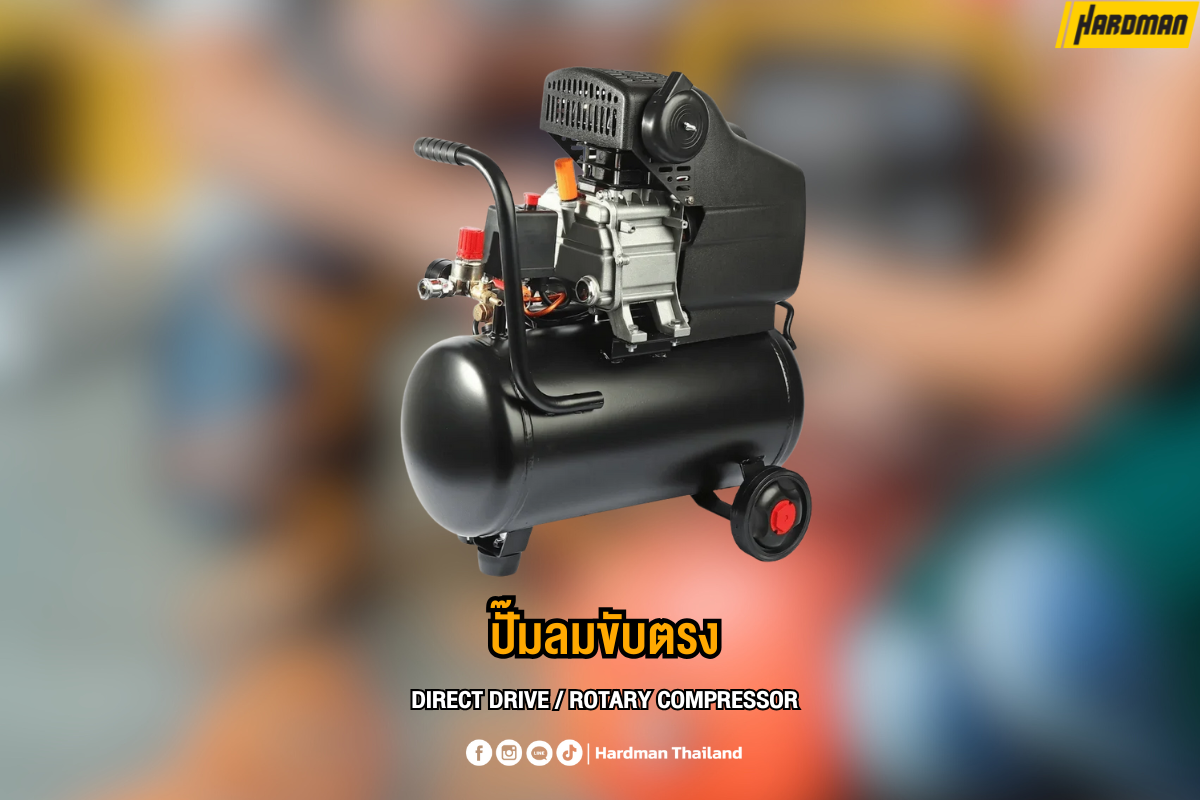
Direct Drive / Rotary Compressor
Direct drive (rotary) compressors use a motor directly connected to the pump head, delivering high and continuous airflow. They are well-suited for heavy-duty applications like car washes, factories, or medium to large-scale industries. These compressors are typically larger and heavier, requiring maintenance for their oil and lubrication systems.
Maintaining Your Air Compressor for Durability and Peak Performance
- Check Lubricating Oil (for oil-lubricated compressors): Always change the oil according to the manufacturer's recommendations to keep the pump head running smoothly.
- Drain Moisture from the Air Tank: Air compressors frequently accumulate moisture in their tanks. Drain it regularly to prevent rust and damage.
- Inspect and Replace Air Filter: Ensure the air output is clean and free of dust or debris that could harm your tools. Replace the filter as needed.
- Check Air Hoses and Connections: Look for any leaks that could reduce air pressure and waste energy.
- Store in a Dry and Clean Place: This prevents dust and moisture from damaging the air compressor.
How to Use an Air Compressor Efficiently and Safely
1. Always Read the Manual Before Use
Even though air compressors may seem simple, each model has specific limitations and features, such as maximum pressure, continuous operating time, or even thermal protection systems. Misusing the machinefor example, using a portable model to power an industrial air toolcan burn out the motor in minutes.
2. Place the Machine on a Flat, Stable Surface with Good Ventilation
This ensures both safety and extends the lifespan of your unit.
- Place the compressor on a flat and stable surface to prevent vibrations or tipping.
- Avoid placing it in confined, poorly ventilated, or humid areas.
- For larger models, do not place them against a wall or inside a cabinet, as heat won't dissipate effectively.
3. Avoid Use in Wet or Damp Conditions
Even if some models are dust-resistant or impact-resistant, water is the ultimate enemy of air compressors, especially for the motor and electrical control panel.
- Avoid using it in the rain or near standing water when washing a car.
- Cordless or 220V electric air compressors risk immediate short-circuiting or burning out if water penetrates the system.
4. Avoid Continuous Use That Causes Overheating
Many users tend to leave their compressor running to "pre-fill the tank," unaware that this can overwork the machine, especially mini or oil-free models. You should use them intermittently, not continuously for more than 15-30 minutes, and then allow the machine to rest. If the unit overheats, it can trigger an "overheat cutoff" or, in some cases, lead to motor burnout.
5. Inspect the Machine Before Each Use
- Ensure that power cords, air hoses, and air chucks have no tears or leaks.
- Listen for any unusual noises or check if the airflow is weak when you turn it on.
- If using an oil-lubricated model, regularly check the oil level according to the manual.
6. Drain Water from the Air Tank After Use
In tank-equipped air compressors (both medium and large sizes), compressed air often contains accumulated moisture. If this water isn't drained, it can cause the tank to rust from the inside.
- Open the drain valve at the bottom of the air tank every day after use (it's usually easy to open with a wrench).
- A rusty tank can eventually leak or even explode due to long-term pressure buildup.
7. Store the Machine Correctly
- Store it in a dry, well-ventilated, not excessively hot, and dust-free area.
- Avoid tightly wrapping the air hose around the machine, as this can degrade the hose fittings quickly.
- For cordless air compressors: Do not let the battery drain completely. It should always be charged to at least 30-50%.
8. Do Not Modify or Misuse the Machine
- Some users connect small compressors to high-pressure tools like high-power paint sprayers or industrial air guns, which results in the motor being severely overworked.
- Never modify pipes, alter electrical plugs, or use undersized power cords.
Guidelines for Choosing the Right Air Compressor
1. Define Your Usage: First, identify what you'll primarily use the air compressor for. Do you need it for small tasks like inflating tires or sports balls, or for heavy-duty pneumatic tools like impact wrenches and spray guns? Your intended use will dictate the necessary power and features.
2. Consider Motor Power and Maximum Air Pressure: Choose a machine with adequate power (wattage) and maximum pressure (PSI/Bar) for your tasks. An underpowered compressor will struggle and potentially burn out, while an overpowered one might be unnecessary and more expensive. Ensure the compressor's maximum pressure meets or exceeds the requirements of your most demanding tools.
3. Evaluate Air Tank Size: A larger air tank stores more compressed air, providing a longer continuous airflow for demanding tools like paint sprayers or impact wrenches. This also means the motor runs less frequently, extending its lifespan. However, larger tanks make the compressor bigger and heavier, impacting portability. For intermittent, light tasks, a smaller tank is often sufficient.
4. Choose Between Oil-Lubricated or Oil-Free Systems: Oil-free compressors produce cleaner air without oil contamination, making them ideal for applications like spray painting, food processing, medical use, or sensitive electronics. They are also generally quieter and require less maintenance. Oil-lubricated compressors tend to be more durable and powerful for heavy, continuous use, but they require regular oil changes and can introduce oil into the air.
5. Assess Size and Portability: If you need to use the compressor outdoors, on job sites, or in confined spaces, a cordless air compressor or a mini electric air compressor will be ideal due to their portability. For stationary workshop use, a larger, heavier unit won't be an issue.
6. Check After-Sales Service and Spare Parts: Always consider the availability of after-sales service and spare parts. Choosing a brand with good support ensures easier future maintenance and repairs, extending the life of your investment.
Recommended Products
1. BOSCH Easy Pump 3.6 V Cordless Air Compressor
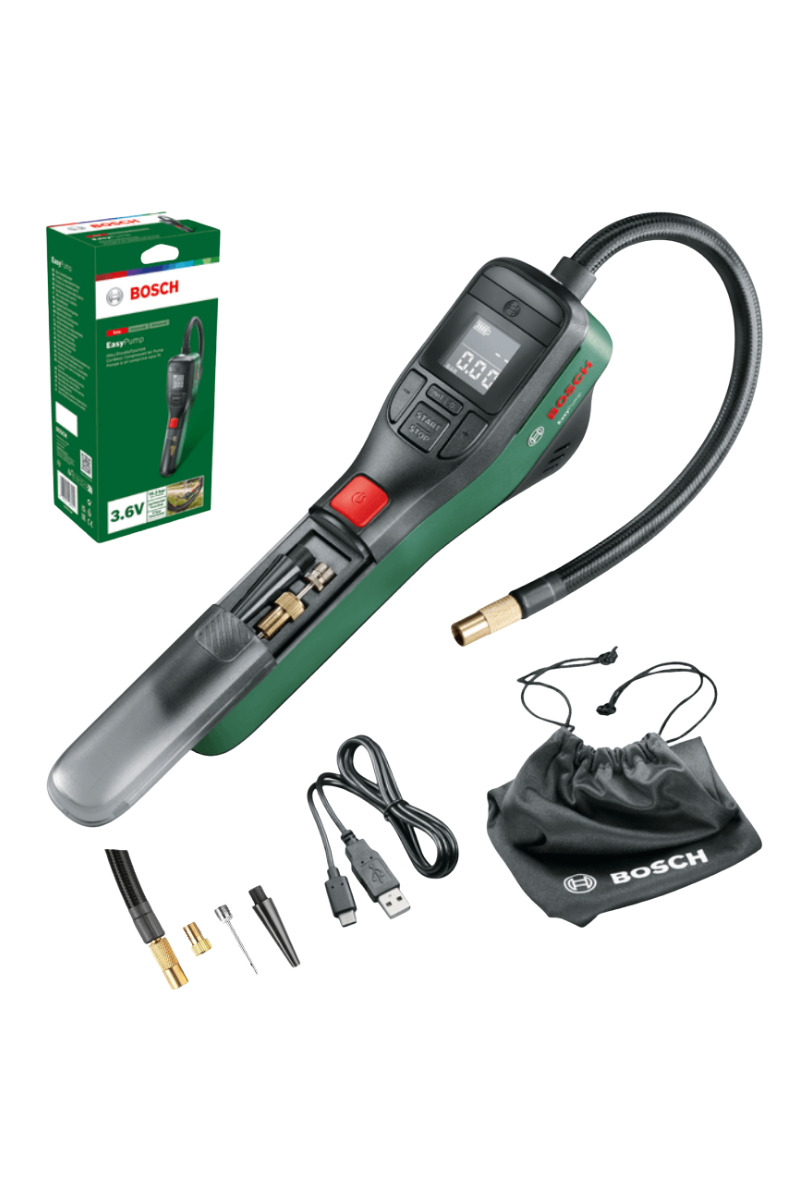 |
- Type: Portable Cordless Air Compressor
- Maximum Pressure: 150 PSI
- Compact size and lightweight design.
- Digital display for clear pressure readings.
- Convenient USB-C charging.
Ideal for:
- Inflating bicycle tires, sports balls, motorcycle tires, and car tires (especially for travel or emergencies).
- General users and camping enthusiasts who need a reliable and portable inflation solution.
2. INGCO AAC1408 12V Mini Electric Air Compressor
Key Features:
- Type: 12V Mini Electric Air Compressor
- Maximum Pressure: 150 PSI
- Plugs directly into a car cigarette lighter socket.
- Compact and portable design for easy storage and transport.
- Features an automatic shut-off system.
3. HECTO C1 600W Oil-Free Air Compressor
 |
Key Features:
- Type: Oil-Free Air Compressor
- Maximum Pressure: 120 PSI
- Oil-free system for easy maintenance.
- Quiet operation.
- Compact size.
Ideal for:
- Spray painting, home DIY projects, and general household tasks.
- Amateur craftsmen and homeowners.
4. DEWALT DCC018N-XJ 18V Cordless Air Compressor (Tool Only)
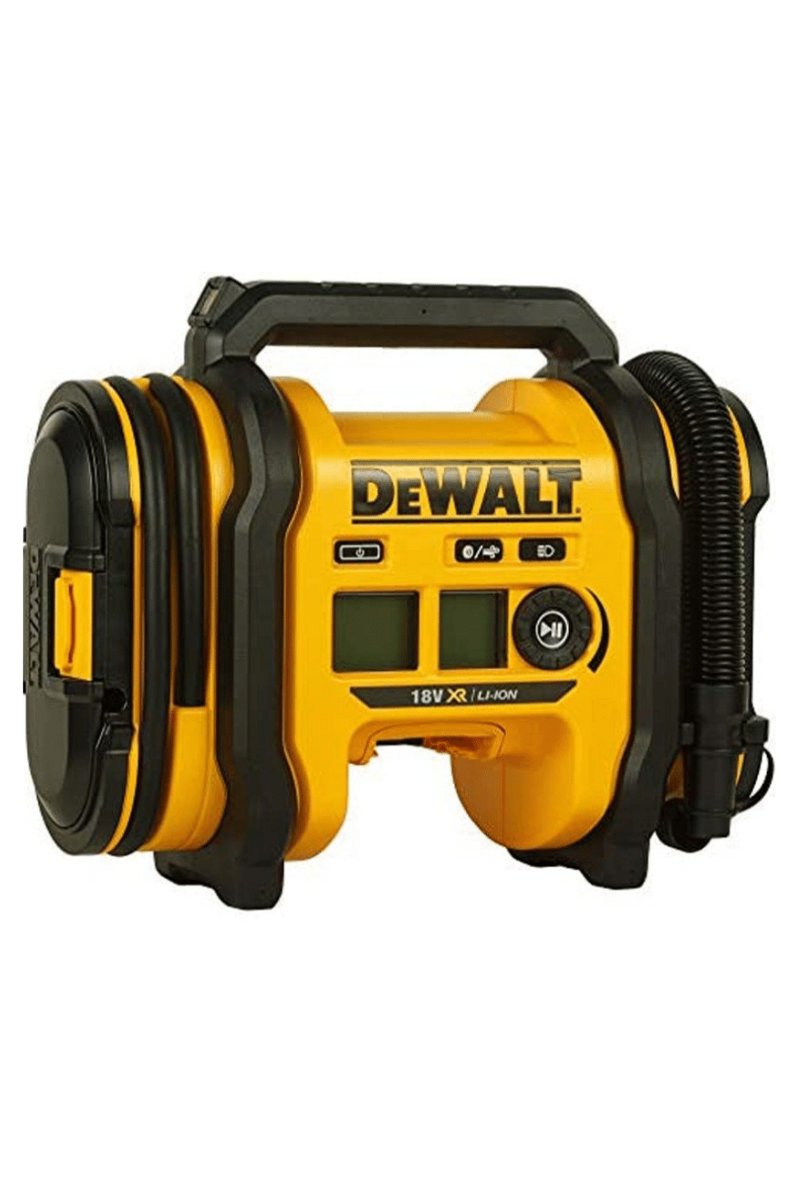 |
Key Features:
- Type: Professional 18V Cordless Air Compressor
- Maximum Pressure: 160 PSI
- High pressure capability with an automatic shut-off system for precise inflation.
- Integrated LED light helps illuminate the work area.
Ideal for:
- Inflating car and bicycle tires.
- Professional tradespeople who need a highly mobile and efficient inflation solution.
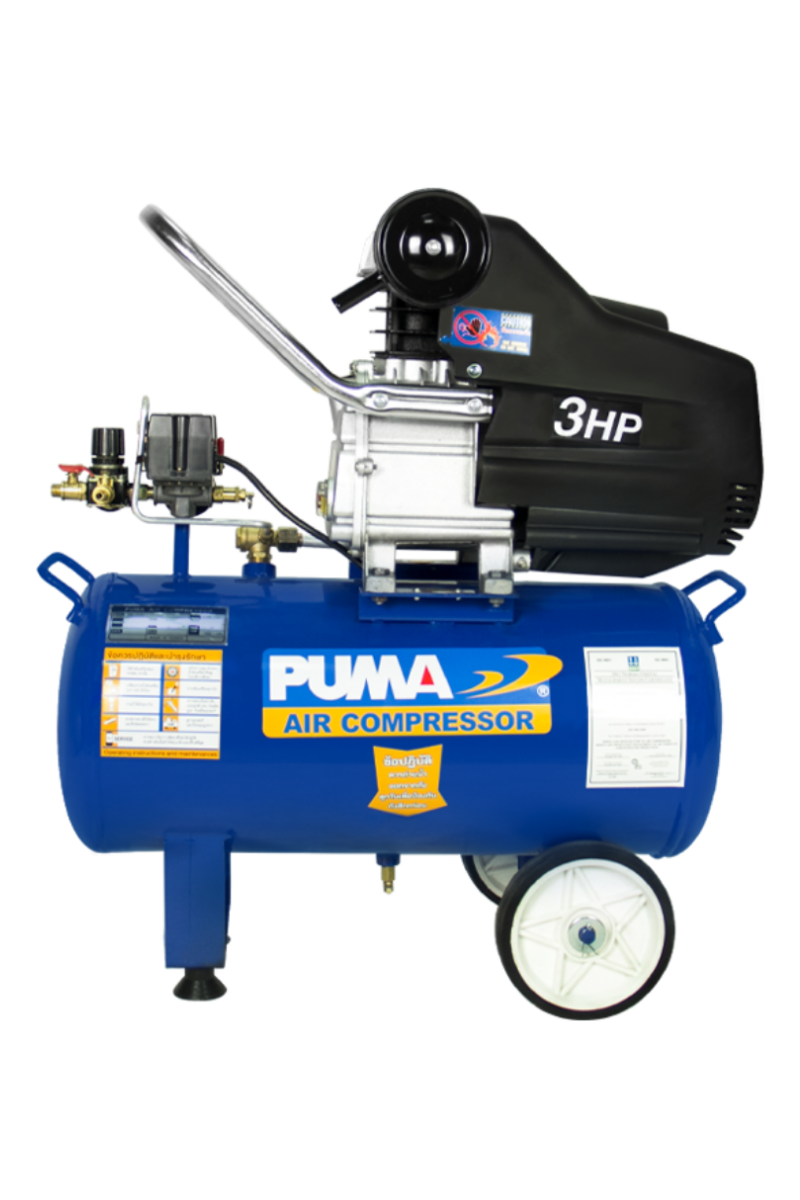 |
- Type: Direct Drive Air Compressor with 25-Liter Tank
- Maximum Pressure: 150 PSI
- High power: Equipped with a 3 horsepower motor.
- Large tank ensures continuous airflow.
|
|
Key Features:
- Type: Direct Drive (Rotary) Air Compressor
- Maximum Pressure: 140 PSI
- Durable and operates with low noise.
- Features an excellent cooling system for extended operation.
Ideal for:
- Heavy-duty tasks and small to medium-sized industrial applications.
- Factory and industrial work.
7. POLO SGBM9033 Direct Drive Air Compressor, 50 L Tank (Rotary)
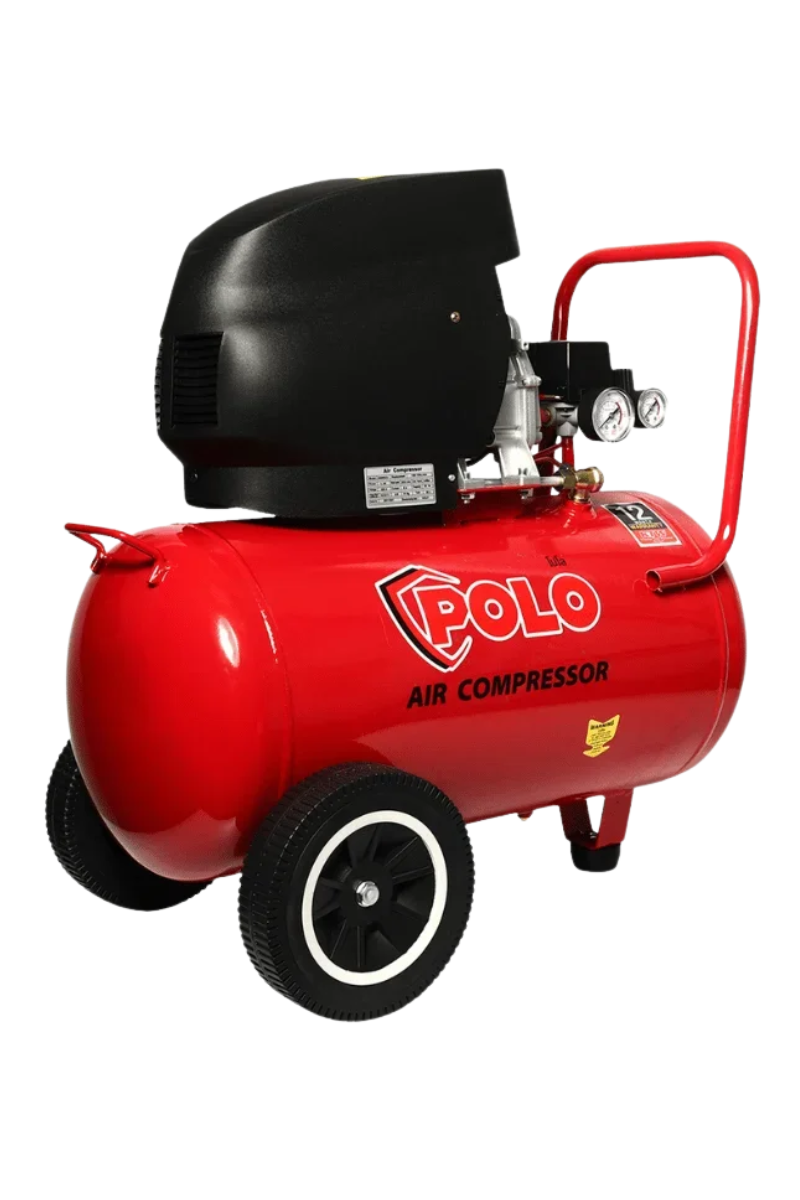 |
- Type: Rotary Air Compressor with 50-Liter Tank
- Maximum Pressure: 150 PSI
- Large tank provides stable and continuous airflow.
- Designed to reduce vibration and noise during operation.
- Continuous heavy-duty work, large repair shops, and factory settings.
- Medium-sized and larger industrial applications.
8. MAKITA AC001GZ 40V Cordless Air Compressor (Tool Only)
 |
- Type: 40V Cordless Air Compressor
- Maximum Pressure: 160 PSI
- Utilizes MAKITA batteries for power.
- Offers high mobility without the need for a power cord.
Ideal for: Professional tradespeople who already own MAKITA batteries and require a portable and powerful air compressor for fieldwork.
9. MAKITA MP100DZ 12V Cordless Air Pump
 |
Key Features:
- Type: 12V Cordless Air Pump
- Maximum Pressure: 140 PSI
- Lightweight design.
- Highly portable.
Ideal for: Inflating bicycle tires, small equipment, and general household and DIY use.
10. INGCO CACLI2001 20V Cordless Air Compressor (Tool Only)
 |
Key Features:
- Type: 20V Cordless Air Compressor
- Maximum Pressure: 150 PSI
- Delivers high air pressure.
- Utilizes INGCO batteries for power.
Ideal for:
- Maintenance work and general inflation tasks.
- Professional tradespeople who already own INGCO batteries.
11. POLO D5501-24 0.75 HP Oil-Free Air Compressor
Key Features:
- Type: Small Oil-Free Air Compressor
- Maximum Pressure: 120 PSI
- Easy to maintain with no oil required.
- Quiet operation.
Ideal for: Light-duty tasks and home DIY projects.
12. POLO D7501-50 1 HP Oil-Free Air Compressor
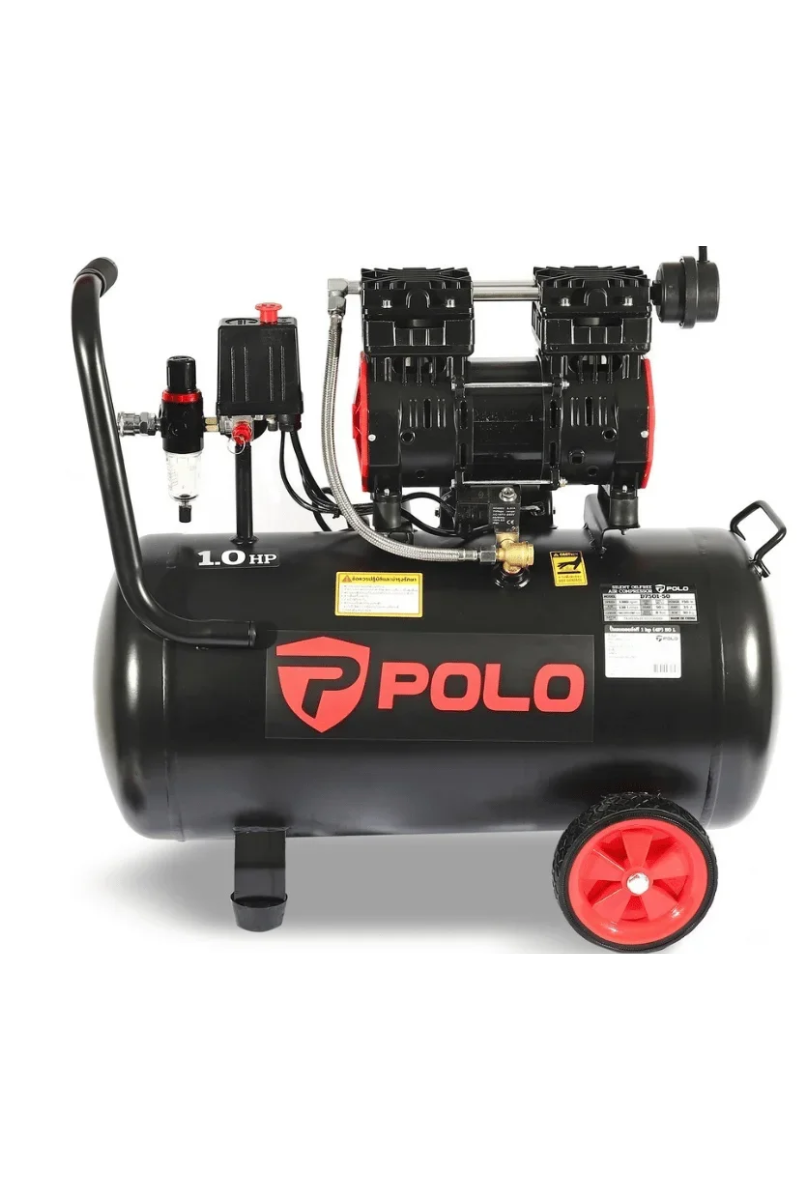 |
Key Features:
- Type: Oil-Free Air Compressor with 50-Liter Tank
- Maximum Pressure: 130 PSI
- Low noise operation.
- Built for durability.
Ideal for:
- Small-scale industrial work.
- Small to medium-sized factory applications.
13. POLO D15001-50 2 HP Oil-Free Air Compressor
Key Features:
- Type: High-Power Oil-Free Air Compressor
- Maximum Pressure: 140 PSI
- High efficiency in operation.
- Capable of continuous heavy-duty use.
Ideal for:
- Medium-sized factories.
- Heavy industrial applications.
14. POLO D7503-100 3 HP Oil-Free Air Compressor with 3 Pump Heads
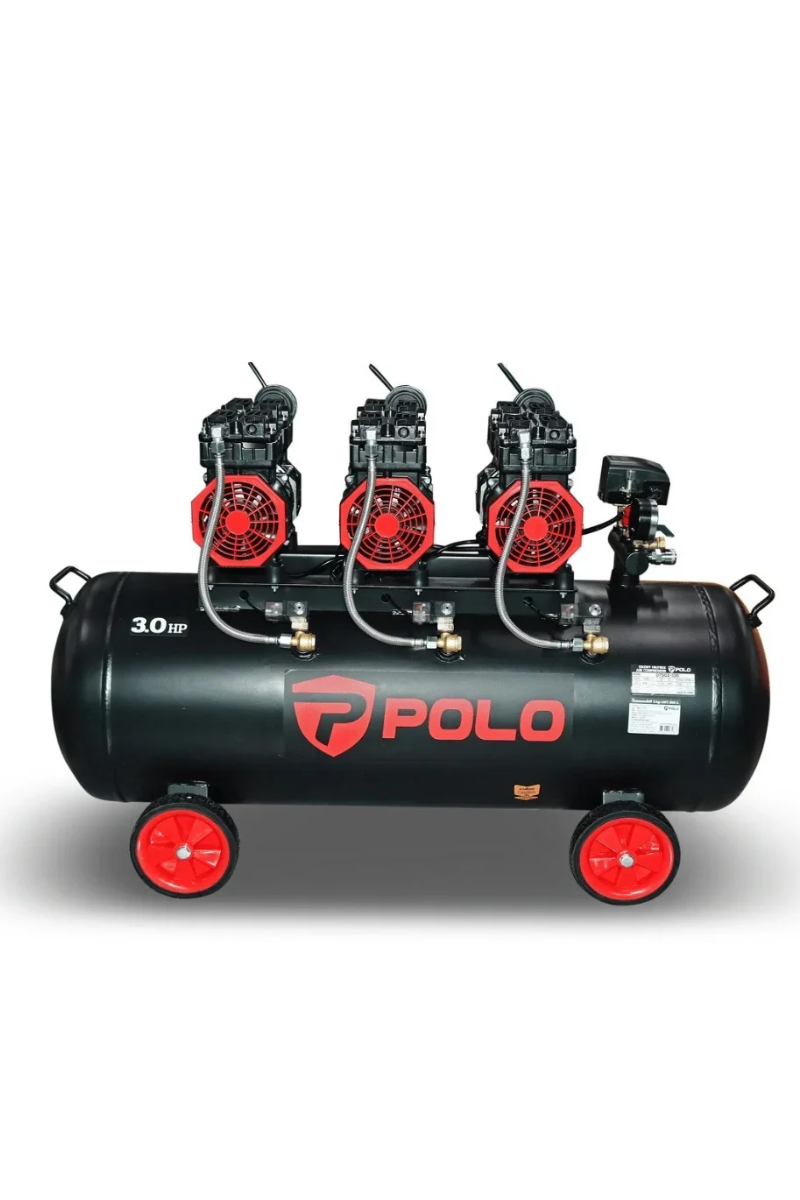 |
Key Features:
- Type: Large Tank Oil-Free Air Compressor
- Maximum Pressure: 150 PSI
- Equipped with 3 pump heads for increased airflow and performance.
- Large tank capacity for ample air storage.
Ideal for: Large factories and very heavy-duty industrial work.
15. PUMPKIN 31554 Direct Drive Oil-Free Air Compressor, 60L
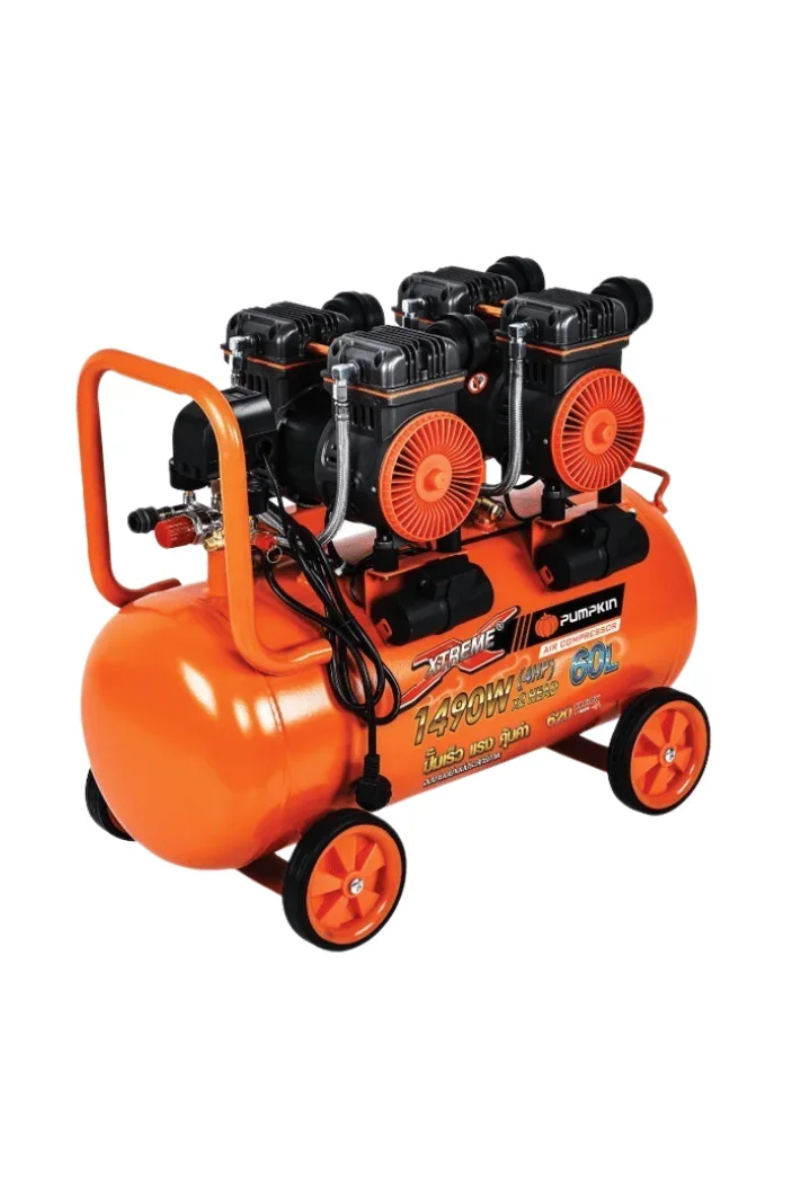 |
Key Features:
- Type: Direct Drive Oil-Free Air Compressor with 60-Liter Tank
- Maximum Pressure: 140 PSI
- Features an oil-free system for clean air and easy maintenance.
- Built for durable, heavy-duty use.
Ideal for: Car wash businesses and industrial applications.
16. MAKITA MP001GZ 40V Cordless Air Compressor (Tool Only)
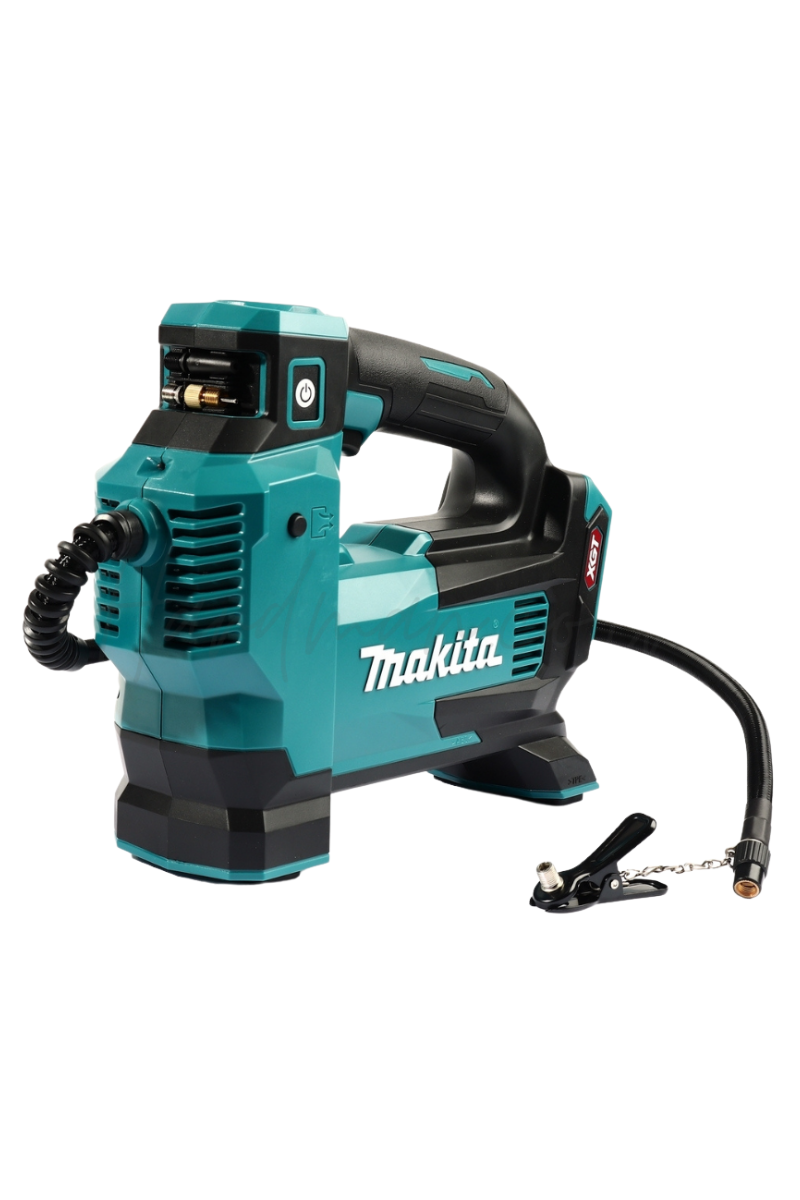 |
Key Features:
- Type: 40V Cordless Air Compressor
- Maximum Pressure: 160 PSI
- Offers excellent mobility as it's cord-free.
- Delivers high air pressure.
Ideal for: Professional tradespeople performing fieldwork who require a powerful and portable air solution.
Summary
Air compressors are essential tools with diverse applications, ranging from household tasks and professional craftsmanship to industrial operations. Choosing the right air compressor for your specific needs and maintaining it properly will ensure the tool performs at its full potential and has a long service life.

